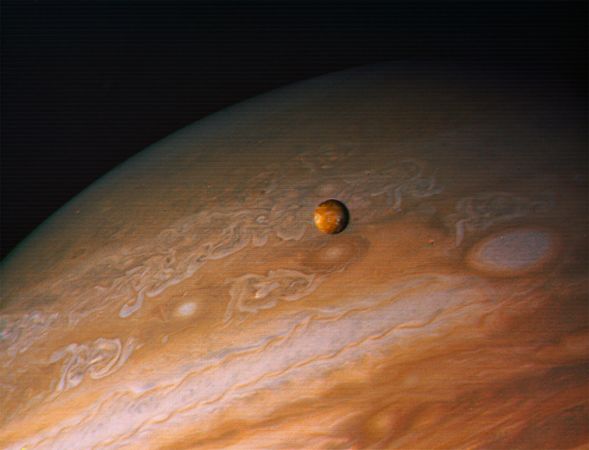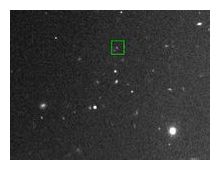
© NASAThe Galilean moon Io orbits Jupiter in a picture from the Voyager 1 spacecraft.
Two new
moons have been found orbiting
Jupiter, bringing the Jovian family count up to 66 natural satellites, astronomers revealed this week.
Currently known as S/2011 J1 and S/2011 J2, the new moons were first identified in images acquired with the Magellan-Baade Telescope at the Las Campanas Observatory in Chile on September 27, 2011.
The objects are among the smallest moons yet discovered in the solar system, each measuring only about a kilometer (0.62 mile) wide.
Unlike Jupiter's four large Galilean moons, which are visible from Earth with even small backyard telescopes, both new moons are dim and very distant from the planet, taking about 580 and 726 days to complete their orbits.
Scientists had previously discovered new Jovian satellites in 2010, and astronomers think there may be more - lots more.
"The satellites are part of the outer retrograde swarm of objects around Jupiter," said
Scott Sheppard, of the Department of Terrestrial Magnetism at the Carnegie Institute for Science in Washington, D.C., who reported the discovery.
Retrograde satellites are moons that orbit "backward" - in the opposite direction of a planet's axial rotation. Including the two new moons, the Jupiter swarm features 52 known retrograde satellites, which are all relatively tiny.
"It is likely there are about a hundred satellites of this size" in the swarm, Sheppard said.

© Scott SheppardA green square marks S/2011 J2, one of the newfound Jupiter moons.
Like most of Jupiter's other retrograde satellites, S/2011 J1 and J2 are also classified as irregular moons, because they orbit far from the planet and have highly eccentric and inclined orbits.
Due to their odd orbits, the moons are likely asteroid or comet pieces that were long ago captured by Jupiter's gravity rather than developing in place during the formation of the planet itself.
"Because these outer irregular satellites were captured during the solar system's early years, they can give us insight into the planet's formation and evolution process," Sheppard added.
As far as more imaginative names are concerned, that will require more time and more data.
By established convention, satellites in the Jovian system are named for lovers and descendants of the Roman god Jupiter or his Greek counterpart, Zeus.
But "satellites in general are not given Roman or Greek mythological names until they have at least one year of observations," Sheppard said.


"Like most of Jupiter's other retrograde satellites, S/2011 J1 and J2 are also classified as irregular moons, because they orbit far from the planet and have highly eccentric and inclined orbits.
Due to their odd orbits, the moons are likely asteroid or comet pieces that were long ago captured by Jupiter's gravity"
But i don't know about their supposed age, due to the increased meteoric activity in earth's skies, i am tending toward very recently captured bodies.